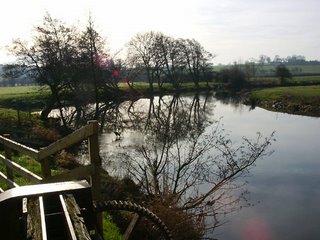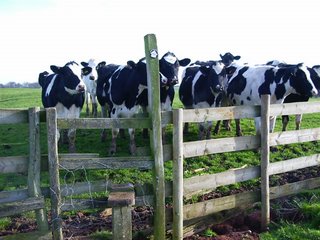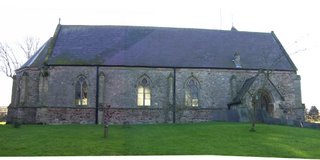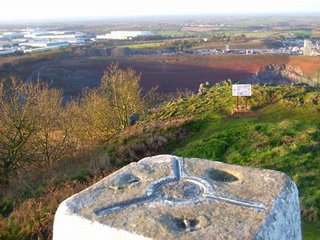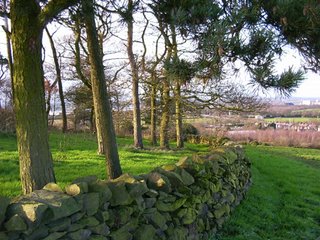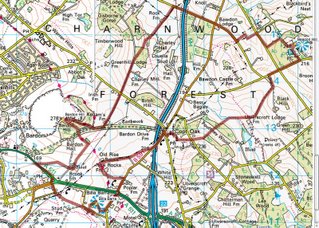- Walked: 28th March 2007.
- Distance: 8.7m
- Total time 3 hrs
- Terrain: fairly flat with a slight climb
- Summary: circular walk starting from Snarestone, to Odstone and Swepstone.
- map: Explorer 245
- Nature Watch: hedges are still in the middle of 'leafing up', very few trees are making the effort yet. More flowers are showing themselves. Some winter crops of rape seed are just flowering, turning some patches of Derbyshire and Leicestershire bright yellow.
This evening was the first time this year that it's been possible to go walking after work (without a torch), and the first time that the weather was pleasant enough to give that very contented feeling. Mmmm.

This walk continues my efforts to walk parts of the Ivanhoe Way ahead of doing the whole walk in one day later in the year. It starts at Snarestone, which is the spot I parted company with the Ivanhoe Way last time out. I followed the IW to Odstone before heading off towards Swepstone and forming a circle back to Snarestone.
The first km from Snarestone crosses some pleasant meadows, before 'dog legging' across a lane. Then some more fields before joining a road. It's a very quiet and pretty road, though.

Looking around I was struck by how flat this part of the country can be. Unusually for Leicestershire, the next stile is not very easy to spot - it's there to the right of the picture:

Once over that stile, the path joins the canal. I love canal towpaths! They're beautiful, flat and good underfoot.

Just a short stretch of this brings us out on another road, where I had planned to leave the Ivanhoe Way.
My big mistake of the evening was to leave the IW here. I did so because it disappears off the bottom of the map that I had with me (Explorer 245), and while Leicestershire is fantastic with its maintenance of its yellow waymarkers and fingerposts, I wouldn't trust to those without a map. The shortcut I took, which was both marked on the map and signposted with a green fingerpost, crossed a field of horses with an electric fence across the entrance and exit. I'm very cautious with these now (see traumatic experience 2 or 3 posts ago), and so did some deft limbo'ing on one side, and careful straddling the other. I then had to climb over a fence (thanks Mr Landowner) and through a farmyard and very muddy path before picking up the good path which is shared by the Ivanhoe Way and Leicestershire Round. (Note to Self - stick to Ivanhoe Way here, and write to Leicestershire CC about the electric fence!)
There then followed quite a climb, but the view from the top of this hill is quite something. This evening was very pleasant, but a little misty, and so the views were spoiled a little.

The villages Odstone, Newton Burgoland and Swepstone are all very pretty and idyllic. This walk passes through all 3 by road, but again, it's a quiet road with verges in places.

There is something particularly appealing about Swepstone Church. what makes it better still (I went to a Christening there recently) the minister is Patrick Stewart (or perhaps a lookalike). I passed this Church during the last walk, and this time I picked up the same path and followed it back to Snarestone.

The stats and route below were generated with Meander.


Image produced from the Ordnance Survey Get-a-map service. Map image reproduced with kind permission of Ordnance Survey and Ordnance Survey of Northern Ireland.















